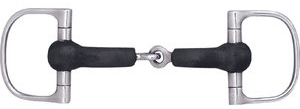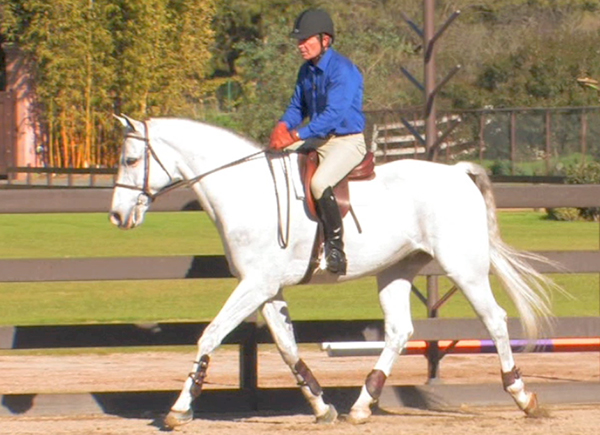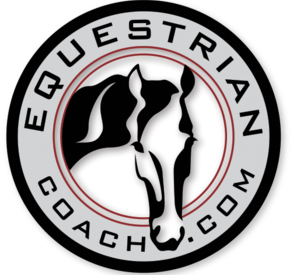Bernie
- 05 Mar, 2015
- 1 Comment
- 5 Mins Read
OTTB Flat Schooling Session
Panel Expert: Bernie Traurig
Submitted by member: Kerry
How would you construct the first fifteen to twenty minutes of an under-saddle schooling session with an intelligent, athletic, energetic, green, five year old OTTB?
Answer by Bernie
First I want to use the mildest bit possible that’s suitable for your horse. Young TB horses sometimes are reluctant to accept soft contact with your arms and hands. I would recommend starting with a mild classical bit such as a fat egg butt, stainless steel loose ring snaffle, or rubber D snaffle all with a single joint. If your horse objects to the single joint try a french link but make sure the joints are not so close to the corners of his mouth that they irritate them. The ones with the wide middle pieces tend to do this.



Choosing the right bit for your horses mouth is only done by experimentation but stick to the fatter ones recommended above as you will have more success making your horse happy with your contact. Make sure the bit is the right width for the horse. Not too narrow and not too wide. You want just a little slide side to side but not excessive.
As horses are schooled through increases and decreases of pressure finding the right bit that he is comfortable with is essential. I find it impossible to school horses with bits that are painful.
For recommendations on my favorite bits watch the topic I did for EquestrianCoach.com called “Bits and Bitting,” which I have made available for free to view here.
Once you have determined the right bit you are ready to work on establishing soft contact. I would spend a good deal of time at the walk. If you encourage your horse to walk forward with in a nice rhythm, you will notice he moves his neck forward and back or as I say ‘Swings’ with his neck. He does this at the walk, canter and gallop and it is his balancing mechanism. Your job is to develop arms and hands that follow this motion perfectly without disturbing his natural swing and with a soft contact with his mouth that he willingly accepts. If you have found the right bit and are following correctly you should be successful at the walk. For most folks this is easy at the walk but much more difficult at the canter and rigid hands that don’t follow or even worse go against the motion really disturb the gait and irritate the horse.
Let your TB walk with his natural head carriage and with his nose in front of the vertical. At this stage do not attempt to put him fully on the bit and ask for flexion at the poll. Your sole objective is that he accepts your light contact willingly. Make several transitions to a halt and back to the walk. Halt by squeezing your fingers to add pressure to his mouth and lighten the pressure when he halts. No leg. Hands without legs and legs without hands. Non clashing simple aids for the green TB.
If all is going well try backing one or two steps. Follow the same formula. Halt, patience for couple seconds and increase the contact with both reins slightly and simply hold that even pressure. No leg. Any indication backward must be followed by release of pressure and walk forward. Be happy with only one step. Repeat several times and you will find one once he catches on to this formula one step leads to two, two to three and 3-4 quality steps is enough. It’s all about obedience to the hand or increase of pressure downward at this stage. Obedience to come back from the hand and forward from the leg. Keep it simple.
Since you have an energetic horse the word stabilization comes to mind. That simply means you school your horse to maintain the same speed at any gait. Horses that are not accepting the contact will be stabilized on loose rein by check and release. I will assume your horse will accept some degree of contact and would proceed in the following manner.

We are trotting now on contact, nose in front of the vertical, and your energetic horse probably will pick up speed. Every time he starts to go faster you simply increase your contact evenly with both reins and when he comes back to his original pace lighten your contact again. Again it’s pressure and release of pressure with non clashing aids. Do not add leg when you ask him to slow down as you will only confuse the uneducated green horse. Sometimes this takes a long time but it is worth the time.If this is going well do some transitions from trot to walk or halt and back to trot. I hope I’ve made my point about non clashing aids (not gas and brake at the same time) so I won’t repeat myself but following this formula throughout your schooling of the green TB will bring great results. Incorporate lots changes of direction with circles, half circles, and serpentines. He must learn to follow the opening rein well at this stage. Give him several walk breaks on loose rein to relax. Calmness is all important throughout all this.
You asked me for advise for the first 15-20 min of a flat school for a intelligent athletic energetic green horse so I think you have enough homework for that time frame. The advice described is for the average rider on an average Green OTTB.
All of this can be found on my video tutorial on EquestrianCoach.com called Fundamentals of Flatwork. There are 3 versions of a complete system of training the horse from dead green to advanced. The basic version is tailor made for the TB horse and is based on the American Hunter/Jumper Forward Riding System.
Here are the links to all those videos:
Have Something You Want to Ask Our Panel of Experts?
Ask The Experts is the ultimate way to get help from the top professionals in the equestrian industry without leaving the comfort of your home. This service is available to Monthly, Annual and Lifetime Members of EquestrianCoach.com.





Sam P.
I cannot agree more with the philosophy regarding off-track thoroughbreds, as expressed in this article. My guy is less than a year off the track and it’s all about going straight and forward. Keeping his attention and allowing him to move forward from my leg creates a beautiful frame. He does not get nervous with pressure from my leg. I literally don’t even have to touch his mouth – I honestly feel like these guys have great reactions, as long as you’re calm as a rider. A Thoroughbred with a good brain is like a gift from heaven!